Author Archive

I’ve got my own memories of children listening to a brass band perform classical music during a particularly windswept holiday, which ended with us all diving for cover when the heavens opened. That particular concert in a bandstand similar to this one wasn’t very full, but during their heyday in the Victorian era bandstands were enormously popular and drew crowds of up to 10,000.
Thursday night concerts at Myatt’s Fields, Lambeth were always packed, right up until the Second World War. This account by the writer Jack Donaldson was published in 1937: “I arrived on time but there was no room on the seats or the railings, so I leant against a tree and enjoyed the music. The children danced to it, played ball to it, sang to it and ignored it, The grown-ups, all listening, sat round on their wooden seats or leant against the green railings and were happy.”
Bandstands were first pioneered by local authorities in the Victorian era who wanted to attract people to their parks. The councils realised that worsening conditions in urban areas meant there was an increasing need for green, open spaces where the general public could relax, and the offer of free musical entertainment meant the crowds packed in to listen to brass, military and wind bands that were hugely popular in those years.
But the origins of British bandstands go right back to the great Pleasure Gardens of the 17th and 18th centuries. The most famous of these was Vauxhall Gardens, which were situated in New Spring Gardens, close to the railway station. It combined music, illuminated fountains, hot air balloons, tightrope walkers and firework displays for the rich and fashionable people. They were like the night clubs of their day and drew enormous crowds from all over the country, who loved the music pavilions, which hosted promenade concerts, where the audience could stroll about while listening to the music, and it was from these musical events that the bandstand evolved.

The first were built in South Kensington’s Royal Horticultural Society Gardens in 1861 and when they closed the bandstands were re-erected in Southwark Park and Peckham Rye, but both were destroyed in the Second World War. They soon became so popular that nearly every public park and seaside resort had one by the end of the 19th century. They tried to out do each other in terms of their colourful and ornate design.
But the popularity of these concerts waned in the 1950s as other attractions, such as the cinema, radio and TV became increasingly popular and, as a result many fell into disrepair. There was a brief revival in the late 60s when groups like Pink Floyd and Fleetwood Mac played a series of free bandstand at Parliament Hill, but most parks were struggling and in the years between 1979 and 2001, more than half of the 438 bandstands in historic parks across the country were demolished, vandalised or fell into a chronic state of disuse.
However, the future’s become much brighter in the last 15 years, with the most significant investment of funding seen since Victorian times, brought about by the National Lottery and the Heritage Lottery Fund. More than 80 bandstands have been fully restored, including this one, or replaced and are now central to regeneration initiatives, making them once again central to their local communities.
For example, Bandstand Busking is now a regular monthly event that gives up-and-coming musicians the opportunity to perform in underused bandstands dotted around London’s parks, and the annual Bandstand Marathon aims to raise the profile of bandstands by staging simultaneous concerts arranged on a single weekend every year. Myatt’s Fields took part last year, holding a free music workshop in July that included percussion and stringed instruments. The bandstand also stages weekly concerts here every Sunday throughout the summer.
There’s also been changes in the way bandstands are promoted. Oganisations like Bandstand Busking use Facebook, Twitter and social media to spread the word about their concerts and a new iPhone App has been launched by a company in the Midlands that plays you stories about the history of its local bandstands.
A new wave of designers have also been creating striking new designs – here we have a picture of a sleek looking bandstand that was recently opened in Maidstone, and Bermondsey’s ultra moden More London Bandstand hosts a range of events throughout the year from dance and theatre to performance art.
This is a clear sign of a renewed interest in British bandstands and, after a period of neglect, they are starting to become a focal point of our parks and communities again and are also very much in the forefront of a new era of public music.
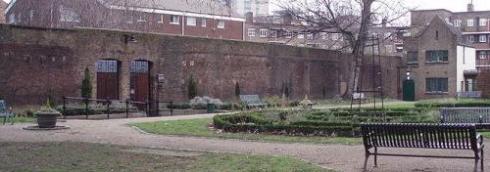
Every time I pass through Borough I make a short visit to look at the crumbling remains wall of Marshalsea Prison. The once infamous prison no longer stands there, except for a single surviving wall, but it is forever immortalised in Charles Dickens’ novel, Little Dorrit.
Dickens wrote about Marshalsea from first-hand experience as his father was imprisoned here for a debt to a baker. As a result, Dickens was forced to leave school at the age of 12 and work in a ‘blacking warehouse’, where he earned a wage of 6 shillings a week, to help support his family.
Marshalsea was a debtors prison, which also housed sailors under sentence of court martial, and political figures accused of sedition. Dickens described the jail as “an oblong pile of barrack building, partitioned into squalid houses standing back to back; environed by a narrow paved yard, hemmed in by high walls spiked at top.”
Run privately for profit, the Marshalsea was run like an extortion racket. Debtors were segregated from the criminals, and they had to pay an admission fee for their accommodation at the prison, the quality of which depended on how much they could afford. For prisoners who could pay, there was access to a bar, shop and restaurant, and they were let out to work during the day. Everyone else was crammed into one of nine small rooms with dozens of others, possibly for decades for the most modest of debts.
Marshalsea was particularly unusual because the prisoners’ family and children were housed with them, which made it unbearably overcrowded. An investigation by a parliamentary committee in 1729 revealed a scandalous abuse of power involving torture, deliberate starvation and prisoners being suffocated to death, such were the cramped and inhumane conditions. The report revealed that 300 inmates had starved to death within a three-month period, and as many as ten prisoners were dying every 24 hours in the warmer weather.
The diary of John Baptist Grano, a musician imprisoned for debt, gives us an intimate glimpse of Marshalsea at this time and shows us the reality of two prisons existing in one establishment.
The ‘master’s side’ for those who could pay for their keep and the dreadful ‘common side’ where prisoners were deprived of all charitable assistance until they were helped by their friends or starved to death. Marshalsea is therefore a reminder of the injustice, oppression and rapacious profiteering that underpinned daily life in the eighteenth-century metropolis.
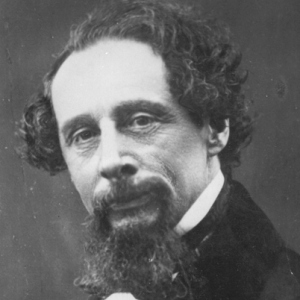
Marshalsea was closed by an Act of Parliament in 1842 and the lands sold off. This quote from Little Dorrit sums up many people’s attitude towards the prison: “Thirty years ago there stood, a few doors short of the church of Saint George, in the borough of Southwark, on the left-hand side of the way going southward, the Marshalsea Prison. It had stood there many years before, and it remained there some years afterwards; but it is gone now, and the world is none the worse without it.”
Just before writing Little Dorrit, Dickens decided to come here again to see what remained of the prison. He found that ‘the front courtyard, often mentioned in the story, had become a butter shop, and the former walls and the prison were now just part of the neighbourhood, but the grim old prison continued to have a powerful impact on Dickens throughout his life, and may even have contributed to the bouts of depression he experienced later in life.
Looking back on the dark days of 1824 when he visited his father in prison, Dickens wrote: “my whole nature was so penetrated with grief and humiliation…that even now, famous and happy, I often wander desolately back to that time of my life in my dreams.”

Opposite the prison site is the Church of St George the Martyr, a building which Dickens also visited regularly. The present church, believed to be the third on this site, was built in the 1730s and is commonly known as “the Little Dorrit church” after the character in the Dickens’ novel, who was born in Marshalsea and both christened and married at St George’s.
Dickens lived a short distance away in Lant Street, lodging in a house that belonged to the Vestry Clerk of St George’s. He set several scenes of the novel in and around the church and there is a small representation of Little Dorrit in the east window of the church.
Tim Russell
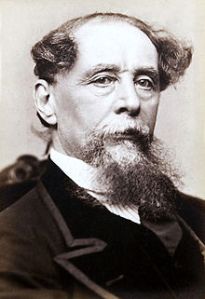
On a dark, cold October night in 1857, Charles Dickens stepped out of his home in Tavistock Square at two o’clock in the morning, and walked to his country house, Gad’s Hill Place, near Rochester, some 30 miles away.
His route took him through Holborn, across Blackfriars Bridge to Elephant and Castle, before heading down the Old Kent Road and off to Rochester.
He was 45-years-old and the walk marked something of a crisis in the great writer’s life. It was the year that Dickens met 18-year-old actress ‘Nelly’ Turnan, a girl who was to become his mistress. Unable to publicly leave his wife of 20 years, for fear of scandal, Dickens set Nelly up in a villa that he could secretly visit.
Dickens knew the streets of London like the back of his hand, from the highest courts to the lowest slums, and the walk to Gad’s Hill took him just seven hours. The reason why he set off on these
long nocturnal rambles was his inability to get to sleep during this period. In his essay, Night Walks, he wrote: “Some years ago, a temporary inability to sleep, caused me to walk about the streets all night. I would get up directly after lying down, go out, and come home tired at sunrise. My principal object to get through the night.”
Most of Dickens’ walks took him through the city and into south London. “If we were very lucky,” he said, “a policeman’s rattle sprang and a fray turned up; but, in general, surprisingly little of this diversion was provided. Except in the Haymarket, the worst kept part of London, and about Kent-street in the Borough, and along a portion of the line of the Old Kent-road, the peace was seldom violently broken.”
It is believed that Dickens’ inability to sleep was partly due to the turmoil in his mind – created by his affair with Nelly and the desire to divorce his wife Catherine – but some experts now believe it might also have been caused by manic depression, also known as bipolar disorder, which is characterised by cyclic shifts in moods between mania and depression, and it is likely that he found walking to be the best antidote to the condition’s debilitating effects.
By this time Dickens was the most famous author in the world. He was wealthy and seemed to have it all, but after a very difficult childhood, which saw the author working in a blacking factory and living on his own when his father was thrown in prison, Dickens started falling into depressions with the start of each new novel.
His friends wrote that he became down every time he set to work on a new project, but his mood would gradually lift until he was in a kind of mania by the time he finished. Dickens depression seemed to worsen with age, and he eventually separated from his wife to live with Nelly. After he was involved in a train crash four years before his death, in which he assisted dying passengers before help came, his depression seems to have finally blocked his creativity, and his previously prolific output virtually ceased.
Whether this view of his mental health is true or not, the great writer undoubtedly had an affinity for the people in Bethlehem Hospital. During his night walks he would often walk pass the hospital and wonder whether there was really such a big difference between the people called insane within the hospital’s walls and the public who were free to walk outside. In Night Walks, he writes: “Are not the sane and the insane equal at night as the sane lie a dreaming? Are not all of us outside this hospital, who dream, more or less in the condition of those inside it, every night of our lives? Are we not nightly persuaded that we associate with kings and queens, emperors and empresses? Do we not jumble events, people, times and places, as they do? One afflicted man said to me, “Sir, I can frequently fly. I was half ashamed to reflect that so could I by night.”
As dawn approached Dickens would often enter a railway station to watch the morning mail come in.
“The station lamps would burst out ablaze,” he said. “The porters would emerge, the cabs and trucks would rattle to their places, and, finally, the bell would strike up, and the train would come banging in, knowing that sunrise was not too far away.” It was only when he could see that daylight was gradually approaching that Dickens could relax and begin to feel tired and finally go home to sleep.
Tim Russell

May Day has traditionally been a time of protests, marches and demonstrations.
You can go right back to 1517 and the time of the Tudors, when a mob of young apprentices rampaged through London targeting the businesses of foreign merchants.
But the origin of our present May Day holiday lies in the fight for an eight-hour working day, which began across the Atlantic when the American Federation of Labor took industrial action on 1 May 1886. A bomb was thrown in Chicago killing a policeman and there was a huge international outcry when eight anarchists were falsely accused of the crime and seven were sentenced to death. The police who had earlier shot dead two strikers were accused of fabricating evidence and socialists all over the world, including local groups like the Peckham Reform Club, spoke out against the trial and sentences.
The movement for a shorter working day did not die with those who became known as the Chicago Martyrs. The American Federation of Labor called for a national day of demonstrations and strikes on 1 May 1890, which was echoed by the International Socialist Conference in Paris. As a result, demonstrations went ahead all over the United States and Europe, which is why May Day became an international festival of working class solidarity.
In London, there was a huge demonstration in Hyde Park, with many local workers setting off from Camberwell Green. The procession was headed by the North Camberwell Radical Club’s band who called for ‘Eight hours’ work, eight hours’ pay, eight hours’ rest for eight bob a day’.
Initially, May Day was intended to be a one-off protest. But it continued largely because of the flourishing trade union movement at the time and as a result the size of the London marches grew larger every year. In 1892 a huge crowd estimated at half a million walked from Westminster Bridge to Hyde Park, led by the dock workers of Bermondsey.
It was during this time that elements from traditional May Day celebrations began to be incorporated into socialist demonstrations. Artists and writers like Walter Crane, whose work can be found in the South London Gallery in Peckham, and William Morris started combining socialist values with the familiar ‘Merrie England’ imagery of May queens, garlands and angels. Morris used images of mediaeval pageantry and a lost rural idyll to criticise the squalor of industrial capitalism, while the artist Walter Crane drew a workers’ maypole, with socialist slogans like ‘Solidarity’ and ‘Leisure for All’ written on the ribbons.

This tribute to the workers of the world, called on labourers and factory workers to come forth on May Day and “be glad in the sun” But for most workers relaxing in the green fields on a working day was not an option, it was only the reduction of working hours and the extension of the weekend and holidays that could make that possible, so the marchers sang songs that contrasted the mirth of May Day festivities with the tough and weary world of work.
In 1926, May Day marked the start of the General Strike, and there were many clashes here at the Elephant and Castle. The strikers would stop buses, lorries and vans that didn’t have a TUC permit, but this didn’t deter many blackleggers from trying to force their way through, which led to violence and two buses being set on fire. As a result, the police constantly patrolled the Elephant, many on horseback, and kept chasing people away by riding at them and swinging their truncheons.
There were more local clashes with police in the 1949 when the government tried unsuccessfully to ban May Day marches, but by the sixties these events were beginning to dwindle and when it became a Bank holiday in 1978, it’s radical past seemed to be fast disappearing. So a number of activists launched their own alternative events to take May Day back to its roots, including John Lawrence, who lived in Camberwell, and began organising marches in the 70s that ended in a park with free music, dancing and sport.
By the year 2000 May Day had returned as a more militant protest, due to a broad coalition of activists under the anti-capitalist banner. Green issues had also become more prominent and protestors made the headlines by raising a Maypole next to Parliament, planting flowers in Parliament Square and giving the statue of Winston Churchill a turf Mohican.
The following year a large crowd met at Elephant and Castle for an anti-privatisation picnic before marching on to the West End, where militant anarchists ruined the party atmosphere by breaking away from peaceful demonstrators and smashing shop windows in Tottenham Court Road.
Since then there have been a number of small peaceful radical May Day events that have been a big success, without hitting the headlines. In 2007, a procession made its way from Camberwell to Kennington Park, where the Chartists, a working class movement for political reform, demonstrated in 1848. After reaching the park, the marchers gathered for a picnic and danced around a workers’ maypole, with an imitation surveillance camera on top. Protests like this prove that May Day is not simply backward looking, but remains an ever-changing event that still offers workers a unique opportunity to join together, march for their rights and demonstrate against injustice.

If you walk along the riverside in Bermondsey you will come to a great little pub called The Angel, where for many years a statue of the great reforming MP Dr Alfred Salter sat waving on a bench.
Sadly the statue was taken in 2011, probably for the value of its bronze, but local memories of Dr Salter and his wife remain as strong as ever in the borough and there is now a fundraising campaign to erect a new statue outside the Angel, which has been supported by Southwark Council.
Alfred Salter was born in Greenwich in 1873 and had a brilliant career as a medical student at Guy’s hospital, but it was Bermondsey where he made his home. He spent his working life, first as a GP and then later as an MP, trying to improve the lot of the Bermondsey people, many of whom lived in overcrowded insanitary housing, that led to poor health.
Alfred was doctor to thousands of patients in an area where there was a case of TB in every third house and where illness claimed hundreds of children each year. There he campaigned for, and achieved, the tubercular-testing of milk.
A prestigious career was in prospect, but Alfred decided to become a local GP at the Bermondsey Methodist Settlement and dedicate his life to fighting the appalling poverty and disease that was rife in the local slums. The Settlement had been created by John Scott Lidgett who had a vision of the settlement as a “community of social workers who come to a poor neighbourhood to assist by methods of friendship and cooperation those who are concerned with upholding all that is essential to the well-being of the neighbourhood”.
Alfred was a doctor to thousands of patients in an area where there was a case of TB in every third house and where illness claimed hundreds of children each year. As a result, he campaigned for, and achieved, the tubercular-testing of milk and established mutual health insurance schemes.
While working at the Bermondsey Settlement he met and fell in love with Ada Brown, the leader of the Mothers’ Meeting and the Girls’ Club. Ada shared his political and social views. He converted her to socialism and she encouraged him to become a Christian. They joined the Peckham branch of the Society of Friends together, and decided to devote their lives to helping the people of Bermondsey.
In 1900, the year of their marriage, he established a general medical practice in the area and the couple worked together in trying to alleviate the effects of poverty in the largely working class area. Alfred rented out a shop on the corner of Jamaica Road and Keeton’s Road and turned it into a surgery. He upset his professional colleagues by charging only sixpence for medical conultations and chose to offer services free to those who could not pay. This work was to lead to the establishment of a pioneering comprehensive community health centre, 20 years before the NHS was founded.
Alfred’s takings during the first week amounted to 12s. 6d. This did not last long, however. Within a few weeks his problem became too many clients. It was not only his low charges which attracted patients, it was the treatment he gave and he was so successful he soon needed to recruit four other doctors to the surgery. Alfred ran the surgery as a local cooperative and the five doctors shared their takings equally.
His daughter Joyce was born in June 1902 and he was elected to Bermondsey Borough Council as a Liberal Whip and a JP, but he and his wife gradually grew disillusioned with the Liberal Party’s lack of radicalism and joined the Independent Labour Party (ILP).
At this point the Salter’s old only child, Joyce, who was known in Bermondsey as “our ray of sunshine” caught scarlet fever and died aged eight in June 1910. This personal tragedy might have been averted had Joyce been educated elsewhere, which increased their commitment to the area and its people.
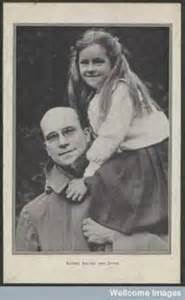
In the 1922 General Election, Alfred was elected to represent Bermondsey West, deciding that by entering politics he could bring about social change quicker and more effectively. Through his efforts play facilities were established at Long Lane, Tooley Street and Tanner Street. He prepared plans to replace tenements with lower density developments, such as Wilson Grove, which can still be seen today. Alfred successfully campaigned for a solarium to treat people with TB and children were sent to recuperate in Switzerland.
His wife Ada became the first woman Labour councillor in London and the first woman Labour mayor in the British Isles. All the couple’s political and social activities were undertaken to try to improve the life of their community. Their aim was to create better housing and proper water supplies in tenement blocks, school meals for children, the establishment of parks and the purchase of a convalescent home for Bermondsey people. They built the first public baths, swimming pools and special baths for babies, and were said to be “among the greatest personal contributors to social progress this century”.
He is still held in great esteem in this borough, and this was shown when Alfred’s statue was erected on a bench outside the Angel. Diane Gorvin’s statue showed Alfred waving to Joyce, who was leaning against the Thames wall with her cat nearby. It represented a daydream of the old doctor remembering happier times when Joyce was still alive.
When the statue was stolen a reward of £1,000 was offered, but sadly no one returned it. A group of local residents therefore set up a fundraising campaign to replace it and a statue of Ada to join him and Joyce. The target is £100,000, which will pay for the statues plus additional security including CCTV and electronic sensors. About £16,000 has been raised so far, which Southwark council has promised to match. The statue of Joyce and the cat were removed after the theft and are being kept in storage for the time being.
There are a number of other local memorials to the Salters, including a plaque at Bermondsey tube station and the Ada Salter Garden in Southwark Park. But the most famous one was a statue of Dr Salter and his daughter Joyce, which was stolen a couple of years ago. Local residents were so upset they have set up a fundraising charity to replace it and create a new one. The target is £100,00 and the charity has so far raised over £16,000. Southwark council has pledged to match the amount raised, which means they now have over £32,000 and so are a third of their way to the target figure.
Tim Russell
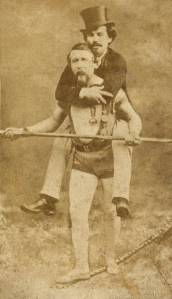
The Great Blondin
If you find the prospect of walking the Niagara Falls by tightrope terrifying, imagine how you would feel strolling across the chasm blindfolded, while carrying a man on your shoulders or pushing a lion across in a wheelbarrow.
There were some of the capers carried out about Blondin, who thrilled audiences with his death-defying exploits a century ago.
In an amazing 60-year career The King of the High Rope performed to millions of people all over the world. Born in Hesdin, France, on 28 February, 1824, he was christened Jan Francois Gravalet, but was nicknamed Blondin by friends because of his blonde hair and piercing blue eyes.
But despite his French heritage, Blondin loved London and eventually adopted it as his home. He lived in St John’s Wood before moving to a house in Little Ealing, where he lived the life of a country gentleman until his death in 1897.
Blondin first got hooked on rope walking at the age of four after being inspired by a troupe of travelling acrobats. He was determined to be the greatest rope walker in the world.
After only six months of training he made his debut, aged five, and found instant fame as the Little Wonder. Blondin spent the next 20 years performing with France’s top troupes, but still craved international fame. He shocked the world when he crossed the Niagara Falls in 1859.
“Everyone thought I was crazy even to try,” said Blondin years later. “But I always knew I could do it.” On the morning of 30 June, 1859, he took five nerve-wracking minutes to reach the other bank, but not before several heart-stopping moments.

Niagara Falls
Half way across Blondin seemed to falter, then suddenly stopped. Very slowly he sat down and began looking round him. But after a short rest the great gymnast sprung to his feet, turned a backward somersault and strolled confidently to the Canadian side of the Falls.
“I don’t know what all the commotion’s about,” said Blondin coolly as he reached the other side. “I only stopped to admire the view.” Blondin then returned to the rope and performed tricks with a chair. Finally he grabbed a camera from a spectator and took photos of his fans standing on the banks. He was an international star, offers of work came from all over the world.
Blondin continued to make crossings of the Falls, introducing a new spectacular trick into every performance. After cycling across the Falls and walking the rope on stilts he would finish his shows by offering piggy-back rides to anyone who was brave enough to climb on to his shoulders. A more difficult challenge was to cook a meal in the middle of the Niagara Falls.
Determined not to be beaten, the great acrobat carried a stove into the middle of the tightrope and coolly cooked himself a cheese omelette.
To satisfy the huge crowds Blondin’s shows became more and more dangerous, and he nearly perished at Crystal Palace after a mistake by his assistant. During the finale of hos show Blondin walked into a blaze of fireworks, but as an assistant handed him a couple of rockets he accidentally dislodged the maestro, and Blondin slopped slipped from the rope.
For a fraction of a second the crowd thought their hero was dead, but somehow Blondin hooked a leg around the rope and hauled himself to safety. After making a fortune, he tried to retire in 1876, but could not live without the excitement and quickly made a comeback, performing until the end of his life.

Blondin Park
After 60 years of performing Blondin died of diabetes on 22 February, 1897. He was buried in Kensal Green Cemetery alongside his wife. Although his house in Ealing is no longer standing, two roads – Blondin Avenue and Niagara Falls – mark its site. There is also a park named after the great man, Blondin Park in Northfields, with a community orchard, wildflower meadow, pond and nature area opened by his great great grandson.
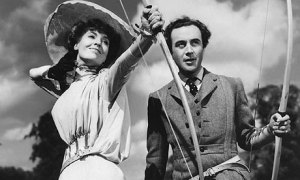
Kind Hearts and Coronets
Forty years ago, Ealing studios reached the peak of their popularity with a string of unforgettable comedy classics.
Magnificent movies like Passport to Pimlico and The Lavender Hill Mob delighted many generations of British movie fans and instantly made international stars out of Alec Guinness, Margaret Rutherford and Peter Sellers.
The man behind the golden age of British cinema was the famous movie mogul, Sir Michael Balcon. Determined to bring a more authentic and realistic style to his films. Sir Michael transformed Ealing comedies from mere vehicles for big names stars like Will Hay and George Formby to brilliantly scripted situation comedies.
Realising they could not compete with the Americans by imitating them, Ealing films were defiantly British in character. In 1949, Ealing released three of the most popular British films of all time – Passport to Pimlico, Whisky Galore and Kind Hearts and Coronets. Sir Alec Guinness became the actor most firmly identified with this golden era and his amazing performance as Kind Hearts of Coronets launched him to international stardom.
Passport to Pimlico was the first Ealing film to prove a worldwide success. It made Stanley Holloway and Margaret Rutherford international stars. The mild anarchic comedy of these lighthearted movies proved a massive success with a British public who were sick of shortages, rationing and postwar austerity.
The studios, located on Ealing Green, were originally bought by Will Barker in 1902 as a base for film making, and films have been made on the site ever since. It is the oldest continuously working studio facility in the world.
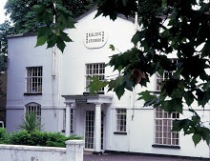
Ealing studios
Sadly, the golden era could not last – by the mid-fifties. Ealing comedies were a shadow of their former self. The last two comedies proved a sad end to the Ealing story. Whodunnit, starring Benny Hill, was an embarrassing flop and Davy, starring Harry Secombe, was little better.
In 1963, Sir Michael sold the studios the BBC but before the Ealing film crew left the studios, Sir Michael placed a plaque by the building’s entrance. It reads: “Here, during a quarter of a century, many films were made projecting Britain and the British character.”
The studios has recently begun to produce theatrical films again, including both Shaun of the Dead and The Descent in 2005. It is also home to the Metropolitan Film School of London, which has a purposely built school on the lot, and is currently used by ITV to shoot parts of Downton Abbey.














